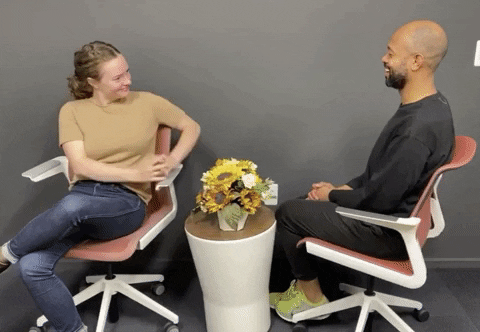Last spring PIE began a search for a director. After a long, intentional journey, we are excited to introduce our new director and the reshaping of our team.
a note from PIE’s outgoing director
Hey Loves,
Last spring, we launched our call for a director and I announced I was beginning my transition out of the role of PIE Director. Our aim was to find a new leader who had the passion, drive and skills to take on this role and move PIE’s work to the next level. I am excited to tell you we’ve found that person-- introducing the Director of People In Education, Siobhan O’Laoire!
Over the last few months, Siobhan and I have been working closely together to make this transition happen. In this time we’ve had to navigate challenges big and small. I’ve gotten to experience her facilitative leadership, her love for detail, her contemplation of the complexities of our work and world and I am honored she chose to join our team. I deeply believe in Siobhan’s leadership and I’m so excited to be a part of the team as she steps into the role of Director.
Here’s to the folks who put the people in PIE!
n8
Different shape. same elements.
Our leadership change is part of a larger reshaping of PIE that expands and distributes leadership across the organization. We are excited for our new form that will ensure PIE continues to shine bright long into the future. Despite our new shape, our core elements remain the same. This shift enriches our commitment to the resonant work and impact of PIE: humanizing schooling by facilitating space for connection, curiosity and reflection.
Today, the key people that make up our sparkling new shape include:
Cyrah Dyras, Teaching Artist for the Artist-in-Residence program
Erin Allen, Communications and Fundraising Assistant, supporting PIE storytelling and sustainability
Nate Mullen, Special Advisor, spearheading PIE’s programming
Siobhan O’Laoire, Director, leading PIE’s organizational strategy and impact
Tulani Pryor, Media Intern, supporting design and media production
Between Two Directors
During the past two months, Siobhan and Nate worked together as co-directors, transferring knowledge, reflecting and dreaming. Check out some fun and interesting highlights from an interview between the two directors that capture their reflections, intentions and directions for PIE:
My job is enabling the space for people to practice and explore what humanizing schooling means… The beautiful thing about the mission is that this question is never going to completely be answered because we’re going to keep uncovering truths and solutions related to it. Every time we get better there’s going to be something else that we need to learn and shift… This space needs to continue to be here to enable that.
- Siobhan O’Laoire
Something that’s special about PIE is that it is the home for humanizing schooling. For me that’s the spiritual home for this work. I’ve done work with other organizations, but that being the driving force of our work makes PIE really distinct. The principal of humanizing is applicable everywhere... Part of humanizing is about tapping into what is essential about being human, which is inherently connective, empathetic and caring.
- Nate Mullen
Cheers to N8:
In the last five years as PIE’s Director, Nate took on the transformative and sometimes challenging work of becoming the leader that the organization needed. PIE stayed committed to changing our minds and practices around learning, teaching and schooling and it evolved into what would become its current team carrying out its current mission: humanizing schooling. Nate’s commitment brought PIE through this transition and into the dynamic and vital work we do today. We are grateful and fortunate for his direction thus far and so excited that we get to work with him moving forward, as he continues to shape and carve out a space for himself in the work of PIE.
Questions about the reshaping of PIE? Email us at pie@alliedmedia.org.
























